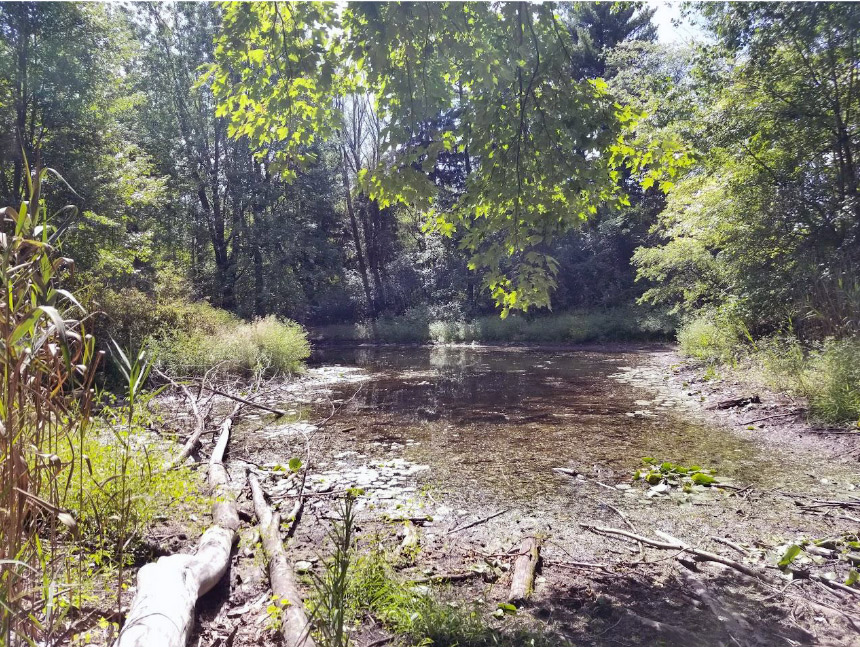
Prepared by Ms. Saco’s Ecology Class: Ezra Goss, OwenYoung-Allen, Jason Richmann, Ethan Lussier, Joseph Garrett, Anikan Percyand and Gregory Curless
Introduction:
Why are Riparian zones important and why did we make this planting guide? We made this planting guide for the Passumpsic Valley Land Trust because they asked us to make this guide for them so they could give it to homeowners that live in a riparian zone. The Riparian zone is the direct chunk of land attached to a stream, river, etc. It is the first 100-500 feet near the body of water. A Riparian zone is its own ecosystem; it has nutrients, energy cycles, insects, animals, and plants.
Tree Species
Between the different trees that grow in northeastern American riparian zones there are a number of similarities. Predictably these trees like to have plenty of moisture, although they tend to prefer soils that drain well so they aren’t sitting in water. The majority of these trees also like full sun to part shade (these species are often colonizers of previously unforested areas which is why they like a lot of sun). These trees are usually tolerant of a wide range of soils including sandy and clay soils.
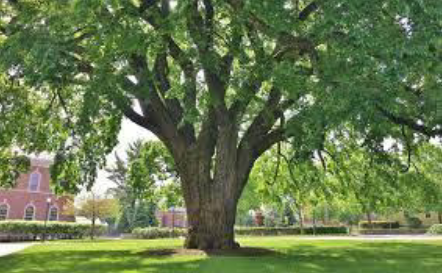
American Elm (Ulmus americana)
The American Elm likes well drained, rich soil. It is very tolerant and can grow in clay, loam, sand, and acidic soil; this lets the tree grow in many places but a disease developed called Dutch elm disease which attacked the American Elm. It is a very good tree for planting because it can live in harsh soil conditions, this also makes it very popular in America.
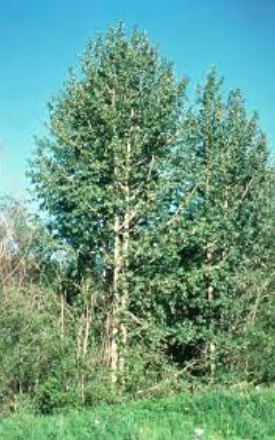
Balsam Poplar (Populus Balsamifera)
Balsam poplar usually occurs in flood plains and is one of the northern most hardwoods in North America. Balsam Poplar seems to do okay with clay soils, but also seems to be found on sandbars and other sandy areas. Balsam poplar like wet but well drained soils although they do grow in dry places in some parts of their range.
Balsam poplar is very intolerant of shade, and is typically an early colonizer of previously unforested areas. Deer and moose will eat the branches but don’t really eat the leaves. The poplar and willow wood borer, bronze poplar borer, and poplar borer are the primary threats to balsam poplar, and although certain insects such as tent caterpillars can feed on it, this is not their primary host tree. Certain fungi can also cause decay. Frost can harm exposed balsam poplar stands. Rivers create the habitat where balsam poplars grow, but they can also destroy mature stands. The resinous buds that give balsam poplar its name seem to deter some species from eating these trees.
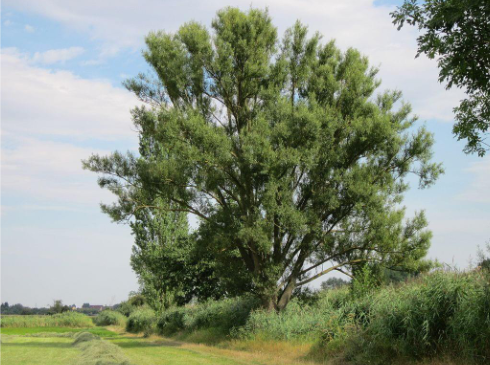
Black Willow(Salix Nigra)
The Common name of this Black Willow. The latin name is Salix Nigra. Black Willows tend to naturally occur near
streams and ponds. Black willow likes consistently moist to wet soils and Full sun or partial shade. It shouldn’t be planted
near houses or driveways. This is because it is susceptible to breakage and it can clog sewer systems and water pipes. It is
also susceptible to powdery mildew, blights, leaf spots, crown gall, cankers, willow sawfly, leaf beetles, and aphids. The
wood is also soft and susceptible to wind damage. Regardless of that it is still considered easy to grow and take care of. It
also reduces bank erosion near streams and rivers and attracts a lot of wildlife.
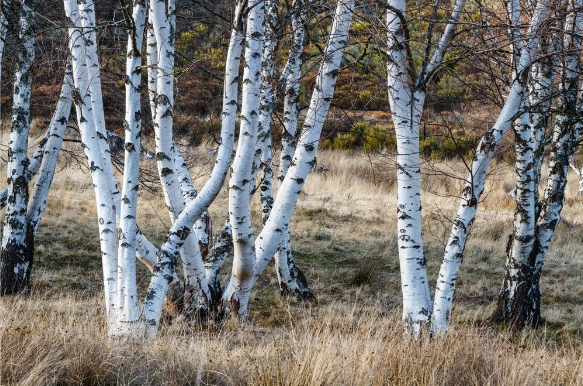
Gray Birch (Betula populifolia)
Gray Birch is the common name and the Betula populifolia is the Latin name. The Gray birch is naturally found in burnt over areas of sandy woodlands. Gray birch trees need moist, sand and loamy soil. The soil type needed is moist, well drained. They are flooding tolerant seasonally. They prefer full sunlight. Birch trees are susceptible to borer disease. The gray birch tree does well in moist soil areas (ponds, lakes, swamps and streams).
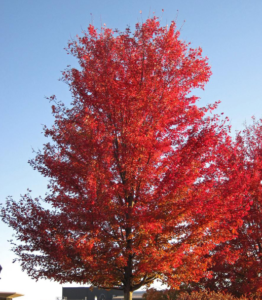
Red maple (Acer rubrum)
Red Maples prefer full sun and part shade. They can be toxic to horses. Red maples are affected by horse chestnut scale, aphids, verticillium wilt. Low maintenance needs a little pruning if necessary. Do it during the dormant season and avoid doing it in the spring because this can affect the tree. Water needs are average soil pH acid, neutral soil type chalk, clay, loam, sand. Red maple prefers
moist but well drained soil and they grow in forests.
Shrub Species
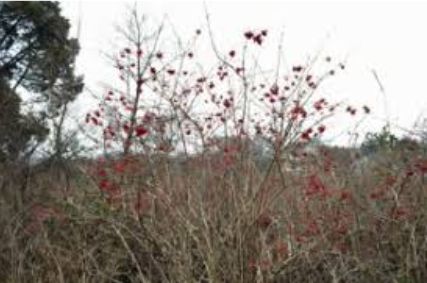
Highbush Cranberry (Viburnum opulus var. americanum)
The Highbush Cranberry isn’t a true cranberry. It’s part of the honeysuckle family, whereas the lowbush cranberry (true cranberry) is part of the heather family.The Highbush cranberry was also known by a different latin name until recently which adds to the confusion.
The Highbush cranberry likes moist well drained soil, prefers loamy soil but is tolerant of a wide range of soils including clay soils and established plants are drought tolerant. The Highbush cranberry likes full sun or part shade. Very few pests affect the Highbush cranberry although the Viburnum leaf beetle can completely defoliate the Highbush cranberry.The Highbush cranberry is known for attracting wildlife (especially birds).
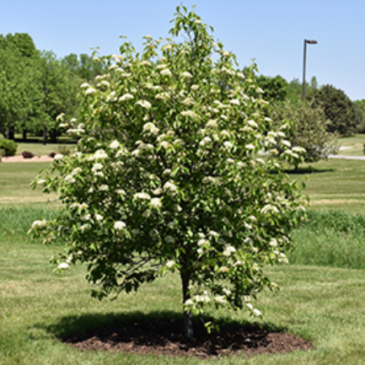
NannyBerry (Viburnum lentago)
Nannyberry is the common name for this shrub, the latin name is Viburnum lentago. They prefer an area with low moist woods or near stream banks. They prefer moist soil near a water source, moist soil is preferred, tolerant to flooding due to natural habitat being near water, they can tolerate poor/dry soil. Nannyberries prefer full sunlight. Nannyberries have no diseases they are prone to. They adapt poorly to wet and compacted soils. But it does adapt well to heat, drought and urban pollution.
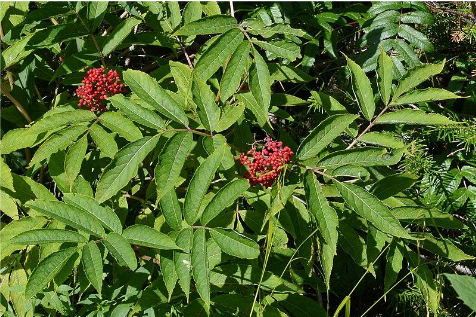
Red Elderberry (Sambucus racemosa).
Where it is Native to rich or rocky wood slopes moist and ravines. It uses a high amount of water and it likes moist soil. It likes shade and doesn't like a lot of sunlight. Its soil types are rocky soils. Warning all parts or the plant is toxic to humans, low toxicity if eaten NOT EDIBLE Bird’s can eat the berries and attract birds.
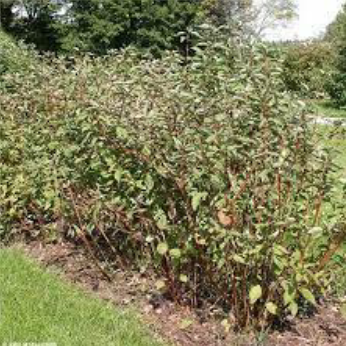
Red Osier Dogwood (Cornus sericea)
The Red Osier Dogwood prefers acidic soil, it grows in wet swamp lands as well. Dogwood anthracnose is a disease that can kill Red
Osier Dogwood. It is very good for gardeners and landscapers because it is easy to work with and can grow in rough conditions.
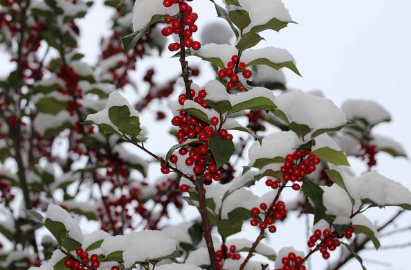
Winterberry (Ilex Verticillata)
This shrub goes by the common name Winterberry. The latin name is Ilex verticillata. Winterberry naturally occurs near water and acidic soil, typically in Riparians zones. Winterberry likes to grow in average, well-drained, medium to wet, and acidic soils. It can tolerate poorly drained soils and wet and boggy conditions as well. Also Winterberry doesn’t handle neutral and alkaline soils very well and will often die if planted in those soil types. It grows best in full sun to partial shade. One positive aspect of Winterberry is that it is generally pest and disease free. One downside is that it is semi toxic.
Plant Species
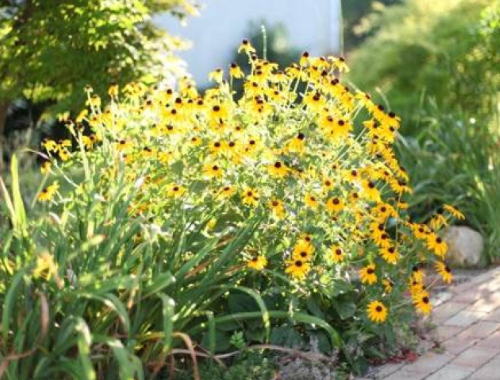
Black eyed susan (Rudbeckia hirta)
The black eyed susan is the common name for this tree, the latin name is Rudbeckia hirta. The black eyed susan is found in fields, pastures, open woodlands, prairies, along railroad tracks and road sides. The black eyed susan prefers clay and loamy soil. Prefers
full sunlight which is 6 to 8 hours a day. Black eyed susan’s are prone to many diseases, some of them are caused by fungi, powdery
mildew and leaf spots. They can be grown in shade but they will not adapt to it, they will start to grow towards the sunlight.
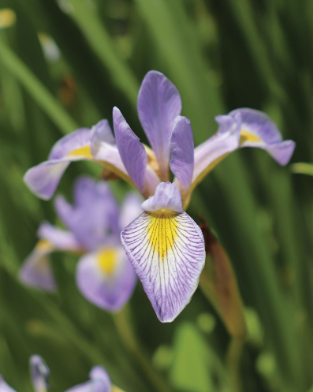
Blue flag iris (Iris versicolor)
Blue flag iris is the common name of this tree and the latin name is Iris versicolor. They grow along the edges of swamps, wet meadows, stream banks and in forested wetlands. The blue flag iris prefers to be grown in moist or wet acidic soils that are high in organic matter. They will bloom the best with full sun which is at least 6 to 8 hours of sunlight everyday. This tree is not prone to any diseases. They do well in damp conditions or near a pond or swamp or stream.
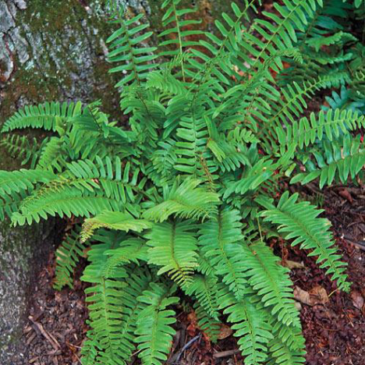
Christmas Fern (polystichum acrostichoides)
This shiny green fern is called a Christmas fern and has the latin name of polystichum acrostichoides. Christmas ferns naturally occur in woodlands. It prefers Organically rich, Dry to medium moisture soil that is well drained. It is generally drought resistant and can thrive in chalk, clay, loam, and sand based soils. Christmas ferns can tolerate more sun if they have extra moisture to account for that sun. Christmas ferns have no significant diseases or pests. Some of its strengths is that it is an evergreen that is rabbit and deer resistant and low maintenance.
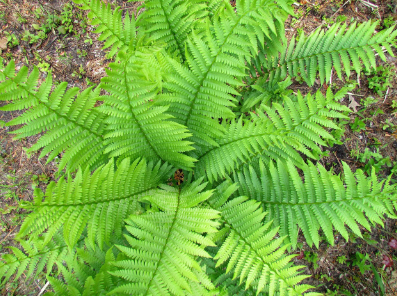
Cinnamon Fern (Osmunda cinnamomea)
The Cinnamon Fern likes moist or wet soil, it also likes its soil’s pH to be acidic. It is a common food for birds. It is mostly in the Mid to Eastern US. Sense it is a fern it needs the perfect amount of sun, too little and it will turn yellow and basically keel over, too much sun and it will cause burnt fonds.
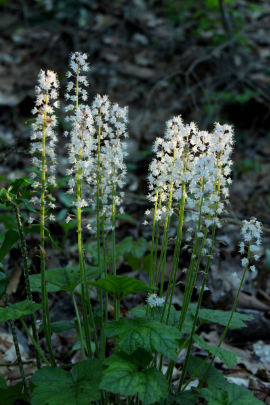
Foam Flower (Tiarella cordifolia)
The foam flower likes moist, well-drained soil, it also wants acidic soil. It grows in the majority of the US and much of Canada. The foam flower is eaten by mice but really nothing else. It is very resistant to pests and insects, only the black vine weevils like to kill the foam flower.
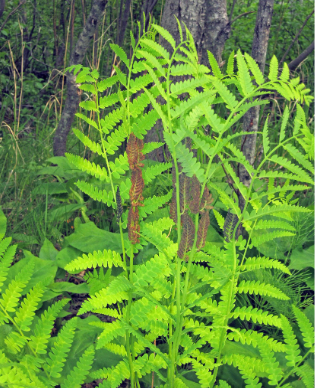
Interrupted Fern (Osmunda claytoniana)
It needs average to high water consumption. Types of soil clay,loam,sand like soils that are moist well drained but not the best drained it can tolerate clay soils, wet soils, rabbits, deer. It doesn't like a lot of sunlight, it likes the shade. Native to Eastern United States, Eastern Canada and Eastern Asia.
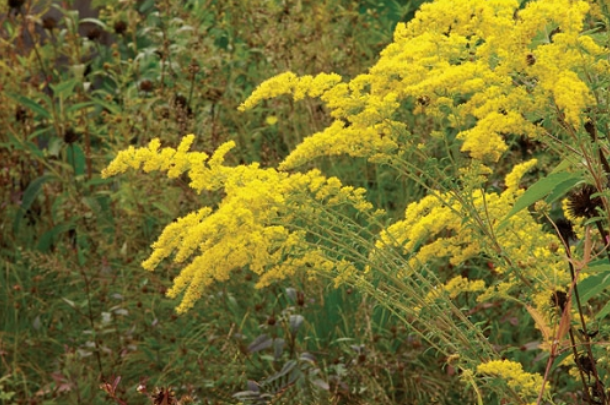
Gray Goldenrod (Solidago Nemoralis)
Gray Goldenrod performs best in full sunlight or light shade. Gray Goldenrod likes average, dry to medium soil, although it isn’t picky and tolerates dry and poor soils. Gray Goldenrod is drought tolerant once established and doesn’t seem to do well in wet soils.
Gray Goldenrod is attractive to bees and birds, and is resistant to deer. Gray Goldenrod does not have any serious pest or disease issues,
although rust, anthracnose, powdery mildew, and leaf spot may affect it a little bit.
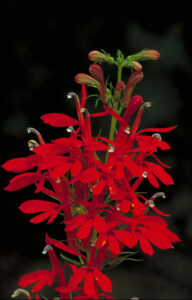
Cardinal Flower (Lobelia cardinalis)
This plant is called the cardinal flower. They commonly occur in marshes, stream banks and low woods. They also like extremely mushy soil areas, so soil that has a lot of ability to absorb water and keep it absorbed. Cardinal flowers are also fans of direct sunlight, So they like a lot of sunlight. However, they are OK with a few hours of no sunlight at all. It is preferable if they have decent water as well. Overall there are two main pathogens that cardinal flowers have issues with in terms of diseases. The main one that’s been named so far, is rust. It appears as small bright orange, yellow, or brown spots on the underside of leaves.
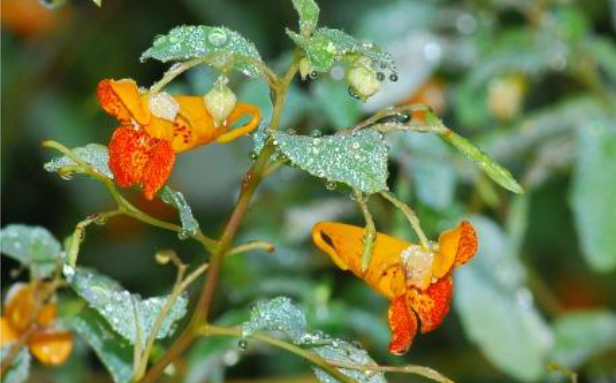
Jewelweed (impatiens capensis)
This flowering plant goes by the name Jewelweed. Its latin name is impatiens capensis. In nature Jewelweed naturally occurs near water sources because it prefers wetsoils. Jewelweed also prefers humus-rich soils and can be grown in clay, loam, or sand based soils. This plant likes partial sun or shady areas but it can tolerate full shade. There are no serious pests or diseases associated with Jewelweed.
One issue you could have is that Jewelweed self seeds a lot and can become a problem by overpopulating an area. Some good aspects of Jewelweed is that it is a beautiful flower that attracts lots of pollinators and Jewelweed can be used for medicinal purposes. It has been associated with the cure for poison ivy itch, athletes' foot and more.
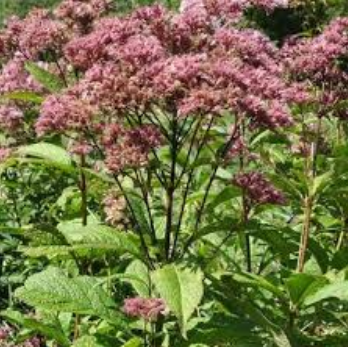
Spotted Joe Pye Weed (Eutrochium Maculatum)
Joe Pye Weed prefers moist and average to fertile soil to grow best, and typically needs full sun. The only potential problem for Joe Pye Weed is white powdery mildew, and the plants are capable of dealing with this. Probably will only grow reliably in zone 5 even though it is often listed as growing in colder zones (such as 3 and 4). Deer aren’t a threat to Joe Pye Weed since they don’t like it. Joe Pye Weed has also been used by people to treat various ailments.
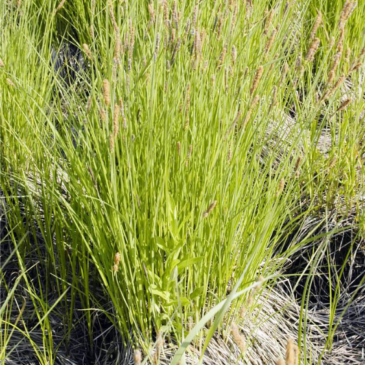
Tussock Sedge (Carex stricta)
Its water needs are average to high. Types of soil it likes clay, loam, sand it likes it soil drainage moist but well drained moisture retentive poorly drained it likes water. Its tolerance to clay soil,wet soil and it attracts deer, birds and butterflies. It likes full sun and part shade.
Sources
Arbor Day Foundation
The Morton Arboretum
Gardenia
Wildflower.org
Gardenia (Native plants of Vermont)
University of Maine
https://pss.uvm.edu/ppp/articles/joepye.htm
USDA
